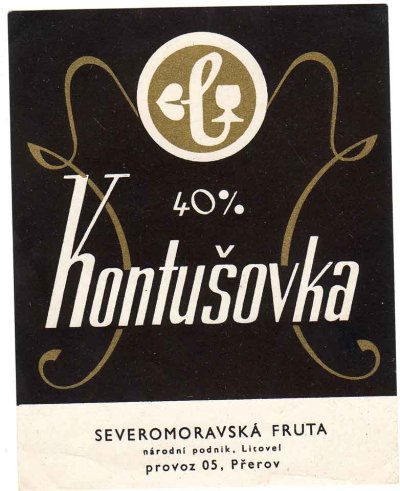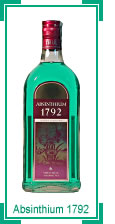
Josef Lada, “Sváteční hospoda“, 1932
Christmas has come early! An exhibition of the works of Josef Lada (15 November-3 February, Municipal House, Prague) With “a visual perspective ..praised by Picasso” this great Czech artist is a real treat. Josef is probably best known as the illustrator of Hašek’s The Good Soldier Švejk. Czech absinth drinkers might be interested in this note:
Charmed by Lipnice, then a community of 800 people, perched idyllically up on a hill with its 14th century castle slumped and crumbling above the gently winding Sázava River, Hašek entered merrily into village life. He enjoyed nothing more than treks through the surrounding farmland, woods and villages, or annoying the local women by dragging their menfolk to the pub, where he would stand to read completed sections of text to his audience, dictating new sections to a more sober writer. Sometimes he would simply play cards, albeit for sums of money way beyond his means. He drank copiously at the bar, chasing the locally produced beer, Lipnicée Lezák, with rum, slivovice and kontušovka; an aniseed based liquor, similar to absinthe. At the end of the evening, the wild writer had only a couple of flights of stairs to negotiate before bed.
🙂












Is it still made?
In Poland it was discontinued unfortunately after Great War, named in the heyday as Kontuszówka or Kontuszowka Polnischer Likőr or Kontuczowka Liqueur (these export only).
🙂 Hi
No idea I am afraid. I knew that it was Polish. Why was it discontinued, do you know?
The next morning was rough. One of those mornings when you feel like you chugged a bottle of absinthe 😉
There was no demand for anise-flavoured liquors, only hard stuff. The palates have changed drastically. From the recipe I have found for it, the product was in the range of 45-56%, whereas inferior (oil-mix) versions were just 38% vol.
Just as recently in the 90’s when Polmos Białystok launched Anyżówka which being the complete failure in terms of sales, as the product was quite a good one.
In the movie with Rudolf Hrusinsky, there is a bottle of Kontuszówka on the table, but I am not sure which one it is.
“A patient dreamed amongst other things (in a rather long dream) that he ordered a kontuszowka in a cafe, and after telling me this he asked me
what it could be, as he had never heard the name before. I was able to tell him that kontuszowka was a Polish liqueur, which he could not have
invented in his dream, as the name had long been familiar to me from the advertisements. At first the patient would not believe me, but some days
later, after he had allowed his dream of the cafe to become a reality, he noticed the name on a signboard at a street corner which for some months
he had been passing at least twice a day.”
This quote comes from Sigmund Freud’s (yeah, that one) “Interpretation of dreams” of 1900.
According to the legend, the first Kontuszówka was made by Janko of Gilów, who in order to evade taxes on imported goods such as badiane,lavender, aniseed, coriander, ginger, nutmeg, lemons,honey put them in casks filled with tax-free spirit.
However, when he come to the gentry assembly, all the ingredients had immersed with spirit, everyone took a sip and so the legend was born.
The most important thing in the commercially-made kontuszówka was lavender oil, naturally-derived from dried leaves and added to the rest, the more contemporary recipes call just for anethole buddies and honey.
🙂
Lada to Freud via Kontušovka..Kontuszówka. I want some…perhaps this is one that should be return from the mists of time. Thanks to you Americans are making piołunówka this fall… we shall have some on Christmas night and also watch out for the golden pig…not La Fee Verte.
Hope they succeed in getting very good results! Happy creating!
The recipe that might be derived from Kontuszówka legend would be:
1 litre of okowita (spirit of heyday, 70% vol, preferably rye base or potato in these times)
20g of aniseed
10g of badiane
15g of coriander
14 days or so of maceration, sweetening with genuine honey. Optionally, oil of lavender (some drops), 1g of ginger and nutmeg so as not overpower the main anisy profile and 1-2g of lemon zests.
I am thinking of making it soon.
There might be one of these Kontuszówka’s named after Švejk…perhaps because of Hašek? Pán Bůh may know 😉 although I am not sure that it still exists.
Perhaps Pán Bůh has one in his cabinet of treasures?
Looks like another nice little recipe. Makes me gnostalgic for old spirits. Hee Hee!
Since we can only get a vodka in the US at 40%, I suppose that one could use the 96% corn alcohol available and dilute it to 70%. Alternately, one could obtain a 40% rye or potato based vodka and run in through the Lembick once again to achieve “aqua vitae” proportions. Though friends and I are enjoying the piolunowka, this one would certainly be welcome in the liquor cabinet too!
Initially, rye/potato would be very good, if I bet corn would be ol korekt, at least it is not beet or marc, hehe.
Long time ago, we have 70% vol rectified spirit available here, but it is prolly no longer there.
My recent creation is pastis excentrique (might be the first one without anise and licorice root, but with wormwood).
Is the recipe for Pastis Exentrique “proprietary and confidential”? Taste?
Pastis Exentrique – like the sound of that – does she louche? without anise I suppose not, but you never know.
Nope, it is posted on My Space using obvious:) measurements and most of the necessary information is there as well.
There is no aniseed, but there are fennel and badiane, hence the louche is typical of using these two anethole buddies (check in the pics).
Do you know:
Absinthine Boyer is what? Pastis d’Antan?
It is sold as absinthe, and so it is treated by fellow Polish absintheurs, if it is sugared, hence should be regarded as “creme” or “liqueur d’absinthe”.
Some might refer to it as wormwood pastis, but no matter of the fact it does contain wormwood, at 50% it cannot be pastis, according to official regulations. Quite a contradictory story in a sense.
I still have not had time to check it, though what it all about and really worth anything.